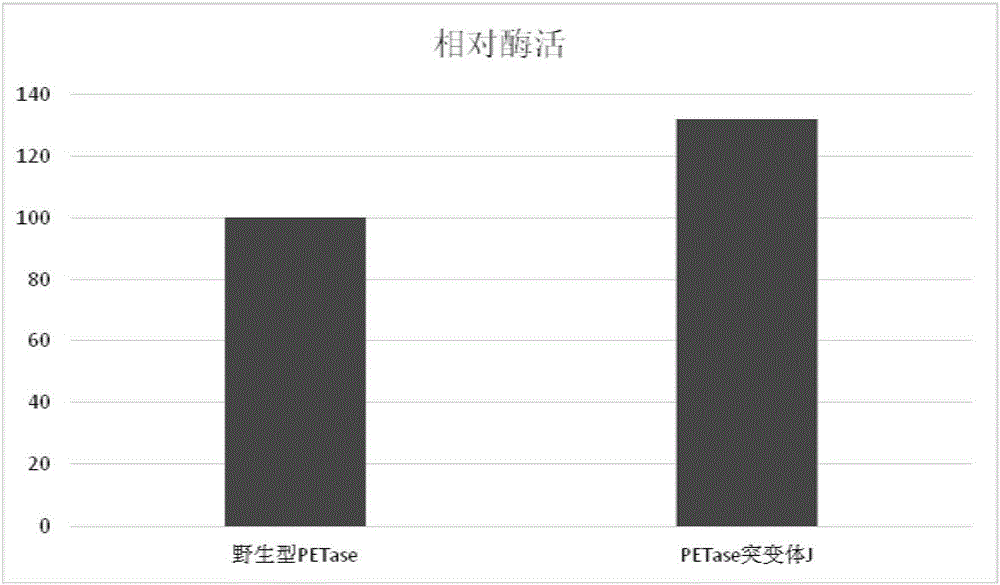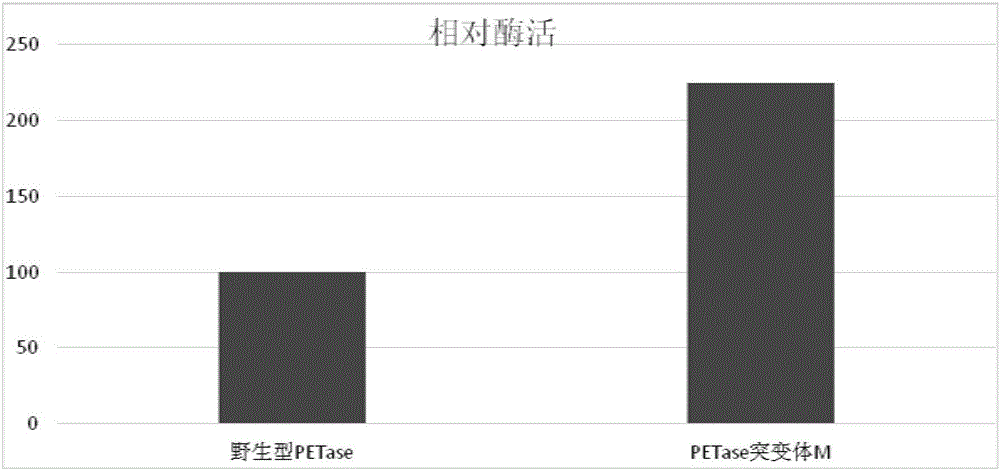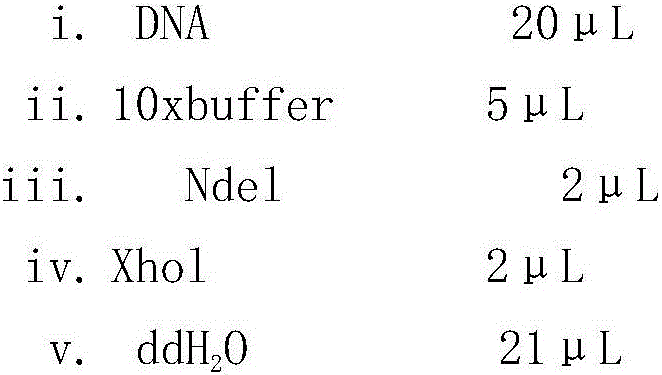PET lytic enzyme mutant, coding gene and application thereof
A technology for mutant and decomposing enzymes, applied in the field of genetic engineering of enzymes, can solve the problems of low absolute degradation rate and inability to degrade hcPET quickly, and achieve the effect of improving enzyme activity
- Summary
- Abstract
- Description
- Claims
- Application Information
AI Technical Summary
Problems solved by technology
Method used
Image
Examples
Embodiment 1
[0019] Example 1 Construction and application of pET-21b-PET decomposing enzyme mutant J:
[0020] Chemically synthesize the pET-21bP nucleotide sequence shown in SEQ ID NO.1;
[0021] The PETase gene shown in SEQ ID NO.2 was excised from the pET-21bP nucleotide sequence and ligated into the pET-21b plasmid.
[0022] a) enzyme digestion system
[0023]
[0024] b) conditions
[0025] i. Digest the target gene for 1 hour at 37°C.
[0026] ii. Digest the plasmid for 2 hours at 37°C.
[0027] iii. After digestion, inactivate at 80°C for 5 minutes.
[0028] Linking the PETase gene shown in SEQ ID NO.2 into pET-21b to obtain the nucleotide sequence of pET-21b-PETase;
[0029] a) Connection system
[0030]
[0031] b) Conditions: 22°C, 2h.
[0032] Using OverlapPCR technology to mutate the nucleotide sequence of pET-21b-PETase;
[0033] Prepare Overlap PCR reaction system
[0034] a) Plasmid 10ng
[0035] b)Primer + 1μL
[0036] c) Primer- 1μL
[0037] d) 2xTransSt...
Embodiment 2
[0058] Example 2 Construction and application of pET-21b-PET decomposing enzyme mutant M:
[0059] Chemically synthesize the pET-21bP nucleotide sequence shown in SEQ ID NO.1;
[0060] The PETase gene shown in SEQ ID NO.2 was excised from the pET-21bP nucleotide sequence and ligated into the pET-21b plasmid.
[0061] a) enzyme digestion system
[0062]
[0063] b) conditions
[0064] i. Digest the target gene for 1 hour at 37°C.
[0065] ii. Digest the plasmid for 2 hours at 37°C.
[0066] iii. After digestion, inactivate at 80°C for 5 minutes.
[0067] Linking the PETase gene shown in SEQ ID NO.2 into pET-21b to obtain the nucleotide sequence of pET-21b-PETase;
[0068] c) Connection system
[0069]
[0070] d) Conditions: 22°C, 2h.
[0071] Using OverlapPCR technology to mutate the nucleotide sequence of pET-21b-PETase;
[0072] Prepare Overlap PCR reaction system
[0073] f) Plasmid 10ng
[0074] g)Primer + 1μL
[0075] h)Primer- 1μL
[0076] i) 2xTransSta...
PUM
 Login to View More
Login to View More Abstract
Description
Claims
Application Information
 Login to View More
Login to View More - R&D
- Intellectual Property
- Life Sciences
- Materials
- Tech Scout
- Unparalleled Data Quality
- Higher Quality Content
- 60% Fewer Hallucinations
Browse by: Latest US Patents, China's latest patents, Technical Efficacy Thesaurus, Application Domain, Technology Topic, Popular Technical Reports.
© 2025 PatSnap. All rights reserved.Legal|Privacy policy|Modern Slavery Act Transparency Statement|Sitemap|About US| Contact US: help@patsnap.com



